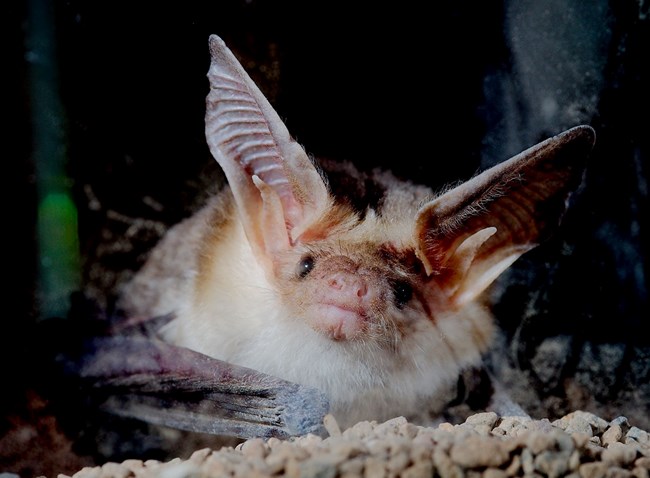Last updated: August 27, 2018
Article
Bat Inventories at John Day Fossil Beds National Monument

NPS Photo
Bats are difficult to study. They're small, they hide during the day and come out at night, and they tend to be found in places where humans have a hard time getting to, such as sheer cliffs or deep caves.
During 2002-2003 inventory work, we found that John Day Fossil Beds hosted particularly high bat species diversity, including several very rare and declining species. One was the pallid bat, large for a bat species and known to eat scorpions and other tough desert invertebrates.
Another species, the spotted bat, was virtually unknown in Oregon before our surveys. It was found to be relatively common in the area and was regularly heard (but not seen!) foraging in the John Day River canyon and tributaries where the park is located. This information and other results from bat inventories done in Upper Columbia Basin Network parks will be instrumental in helping parks prepare for and respond to emerging threats to bats, such as the disease known as white-nose syndrome.
We have published a number of technical reports and journal articles using bat inventory data, and we're also helping Craters of the Moon National Monument and Preserve with long-term monitoring of hibernating bat populations in lava tubes (Rodhouse et al. 2012, Rodhouse et al. 2011, Rodhouse et al. 2008, Weller et al. 2007, and Rodhouse et al. 2005).
